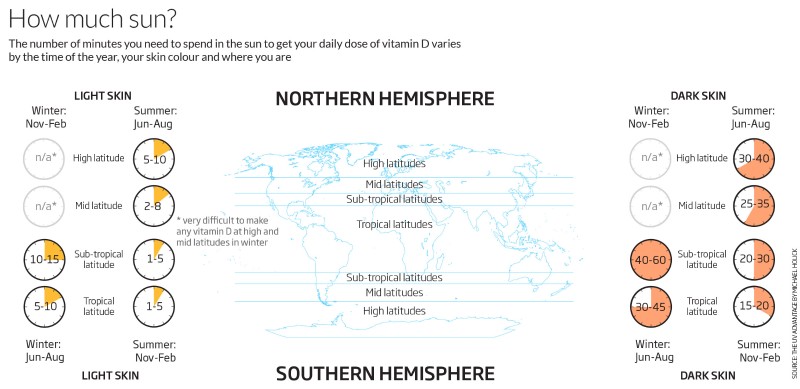Soy, Vitamin D & the Voice of the Heart – Newsletter 12/2016

The year is coming to an end. Perhaps it’s also been a dense year for you – full of events, some uplifting, others challenging. Often the seemingly difficult things need time to reveal their hidden gifts. Time feels like a spinning dryer lately: everything upside down, old ways giving way – willingly or not – to the new. In such phases, it becomes all the more important to pause and take time for yourself. Especially silence – an increasingly rare and precious resource – deserves attention. Meditation, yoga, Qi Gong, Jin Shin Jyutsu, forest walks, or simply letting yourself be carried away by the sound bed: these practices help us trust our body intelligence, reclaim our strength, and act from our center.
Is Soy Healthy?
No, it’s not. The soy industry spends $80 million a year trying to sell soy as a health food. But more and more evidence shows that soy can cause a variety of health problems – some quite serious. Even the phytoestrogens (plant-based estrogens) it contains can interfere with child development and reduce fertility and libido in adults.
Here are just a few of the problematic compounds:
- Protease inhibitors – Hinder protein digestion and may cause malnutrition, growth issues, digestive trouble, and pancreatitis.
- Phytic acid – Blocks absorption of key minerals like calcium, magnesium, iron, and zinc, leading to deficiencies.
- Lectins and saponins – Linked to leaky gut syndrome and immune system disturbances.
- Oxalic acid – May contribute to kidney stones and vulvodynia.
- Oligosaccharides – Cause gas, earning soy the title “king of the musical fruits.”
For more, see this HuffPost article or the summary of Dr. Kaayla Daniel’s book The Whole Soy Story (both in English), plus a German-language article.
Vitamin D – We Need It More Than Ever
Most of us love sunshine – yet we’re told to fear it. So we cover our skin with fabric and SPF in fear of skin cancer. That may still be wise advice, but newer research shows vitamin D – the “sunshine vitamin” – is far more important than once believed.
Severe vitamin D deficiency causes rickets. But even mild deficiency increases fracture risk and may contribute to autoimmune diseases like MS or type 1 diabetes, as well as some cancers and infections.
We get vitamin D two ways: through diet and by exposing skin to UVB rays. Skin cells convert sunlight into a precursor form, which is then activated by the kidneys. This active form helps regulate calcium – a key bone-building process.
Immune cells can also activate vitamin D, and many have receptors for it. MS research since the 1960s has hinted at geographic patterns—more MS cases at northern latitudes. A 2011 Australian study confirmed a strong link between MS and sun exposure, with notable exceptions like Scandinavia, where oily fish (rich in vitamin D) is consumed regularly.
In Iran, after the 1979 Islamic Revolution, clothing norms changed drastically. A resulting vitamin D drop is suspected to be behind an eightfold increase in MS cases by 2006.
A Harvard study showed low vitamin D worsens MS symptoms and doubles the risk of type 1 diabetes in young people. But how much is enough?
The UK and US recommend ~20 ng/ml of blood. Others say 30–100 ng/ml is needed for full immune support. Above 35° latitude (including Switzerland), it’s hard to get enough UVB rays in winter to make vitamin D. Our reserves also deplete after ~30 days.

In winter, nearly half of people in the UK have suboptimal vitamin D levels. People with darker skin need more sunlight to produce the same vitamin D, which raises the risk further.
Despite growing evidence that sunlight protects against various cancers, most people stay covered up. Moisturizers and makeup often contain SPF – even in winter.
The good news? It’s relatively easy to get enough vitamin D: a light-skinned person needs just 10 minutes of midday summer sun on face and arms. Darker skin needs about 40 minutes. Some apps even help you track safe sun exposure.
But what if it’s cloudy or you’re stuck indoors? Dense clouds, shadows, and glass drastically reduce UVB exposure. Early morning and late-day light has little UVB. Tanning beds provide mostly UVA, not UVB.
Can Diet Cover Your Vitamin D Needs?
The US and UK recommend 15–25 µg/day total. That’s about:
- 0.5 tsp cod liver oil (my daily go-to)
- 88 g wild-caught smoked salmon
- 3 cans of tuna
- 15 eggs (no thanks)
- 15 bowls of fortified cereal (still sticking with the cod liver oil)
- 2.8 kg of Swiss cheese (ouch)
Supplements help—especially for pregnant women, seniors, and indoor folks. But beware: while sun-derived vitamin D won’t cause overdose, supplements can. Excess calcium from high doses can harm the kidneys. The UK suggests a max of 25 µg/day; the US allows up to 100 µg/day.
Ongoing studies on vitamin D in cancer and MS patients are showing promising early results.
Bottom line? Get outside. Your body, mind—and cells—will thank you.
And Lastly: A Poem for the Heart
You, heart.
You were born long ago,
between light and darkness.Created out of love and gratitude.
You grew out of time long past; out of Atlantis.As hope for a finite eternity.
You brave rain and storms too.
You delight in love, friendship, doing.You are unconditional, beating with strength.
Without intent, you are awake – pulsing for me day and night.
You are my rhythm, my true path.
My purpose is to follow you, wherever you go.I will follow and love you.
I will live your rhythm –
and love will ultimately prevail.Andrea Lara

Wishing you and your loved ones a season full of wonder, a peaceful Christmas, and a bright start to the New Year.
Warmly,
Gerald